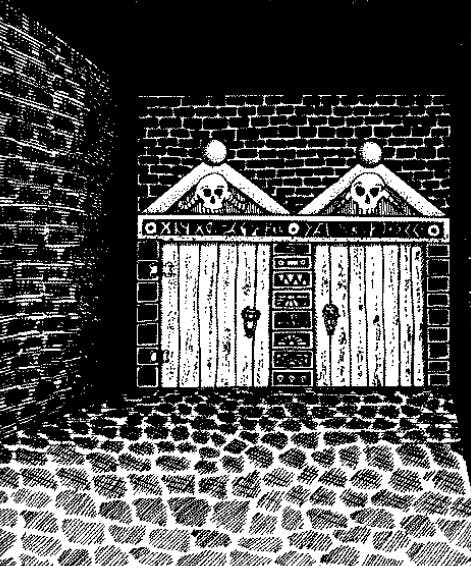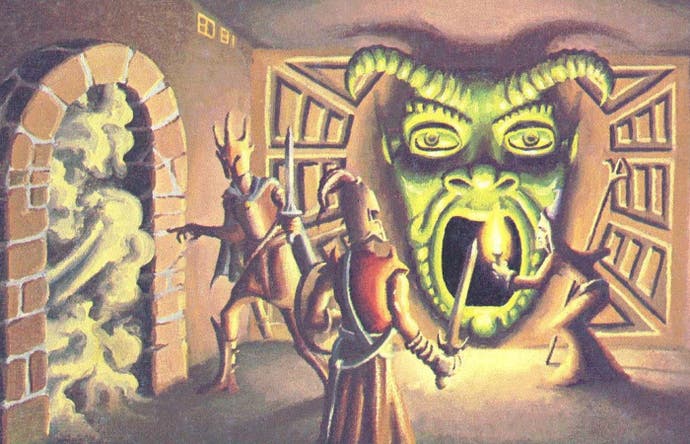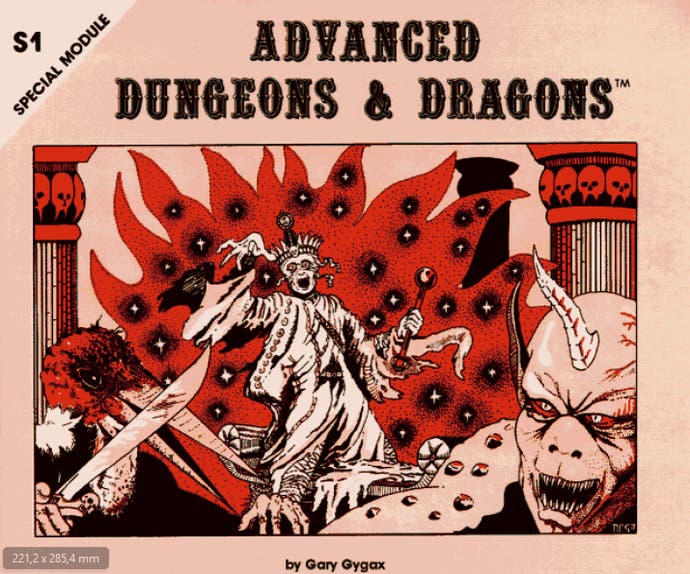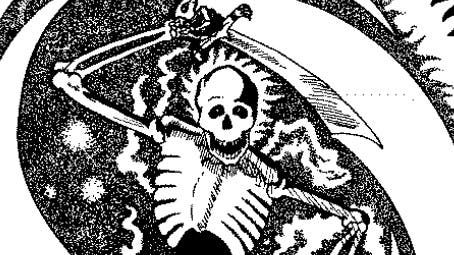Inside Tomb of Horrors, the hardest D&D module ever made
It challenges players, and it challenges different design philosophies.
This article includes spoilers for the Tomb of Horrors D&D module.
The first thing you'll likely hear of Tomb of Horrors, a Dungeons and Dragons module devised by the game's creator Gary Gygax, is how it absolutely lives up to its name. Designed to be almost impossible to beat, Tomb of Horrors has sparked hot debates among players and dungeon masters for over 40 years since its inception, gaining the reputation of being a "meatgrinder" among other, much more unflattering things.
Yet Tomb of Horrors has stuck around since its inception in 1975 and subsequent publication in '78, with adaptations appearing for every new edition of D&D, because there's more to the module than one of gaming's most persistent git gud debates. It was certainly designed as a challenge, but the heart of the matter for most players is the question as to whether Tomb of Horrors is difficult or deliberately unfair, a distinction which immediately makes the discussion more about the design of the game itself, rather than the skill of its players. Players can only work with what the game, and by extension the Dungeon Master, gives them to work with, and so over the years DMs have analysed, and sometimes adapted, the tomb's many traps.

The act of getting into the tomb already poses a considerable challenge. There are three entrances in total, two of them fake and leading to an almost certain death. Tomb of Horrors is full of such choices - only one path turns out to be right, the others mean death. Other than making it seem like the right answer comes down to luck, these sudden deaths are also the focus of much criticism due to the nature of D&D itself. Tomb of Horrors is designed for players of levels 10 to 14. Depending on how often you play and how your DM handles the distribution of experience points, getting a character to this level can take well over a year of play. If included in such a campaign, the Tomb of Horrors swiftly does away with even the most beloved character, leaving players devastated.
However, Tomb of Horrors was originally designed as a tournament module. Players were supposed to make a character for a one-shot, knowing that the goal was to make it as far as possible before dying and then compare your progress and methods with your friends. Like today's D&D PVP arenas, this wasn't about roleplaying so much as knowing that the game could end very quickly for you. Still, unlike battle sessions or PvP war re-enactments, Tomb of Horrors feels like it's supposed to be played with something at stake. After all, we understand the expectation that comes with a certain setup: we don't throw ourselves into every gunfight in a stealth game and we respect the zombie threat in the abandoned mansion because we want to progress and see what's around the next corner. Making it further is a reward in itself, and that doesn't work if I don't care whether my character lives or dies.
In the original booklet, Tomb of Horrors is described as a "thinking person's module". It contains an explicit warning that players "just looking to hack and slay their way through a dungeon will be unhappy", and impresses the importance of making this clear upon the DM. In fact, both players and dungeon masters need to approach this module in a thoughtful way, and this is exactly what makes Tomb of Horrors such an interesting creative exercise. Looking at the module's descriptive texts, hints to the deadly nature of each room in the dungeon are in almost all cases there, but it's up to the DM to deliver them. In the aforementioned false door example, a rumbling noise can warn characters of a collapsing ceiling. Other instances appeal to a player's common sense - if you come across a creepy statue with a mouth wide enough to climb in, maybe don't.

There's certainly a large amount of psychological trickery involved that can feel like betrayal, as Tomb of Horrors punishes exactly the kind of behaviour that usually leads to success in D&D when confronted with an unusual situation - excessively touching things, hitting things and poking anything that looks even remotely dangerous. In one room, every chest contains something deadly instead of the treasure adventuring parties so readily expect. Instances like this force you to closely examine your surroundings in the tomb, and the DM needs to help with that by providing a detailed description. Tomb of Horrors refers to its illustrations a lot, since they aid descriptions and often hold the key to finding helpful hints or suspicious items. If players get the hint isn't just up to the module text, but also what the DM makes of nothing but a single image.
This attention to detail makes the Tomb of Horrors a slow, methodical adventure, exciting for the same reasons a roguelike is. It will most certainly kill most of the group, but it does what Gygax intended it to do when he originally designed it as a way to teach his own players a lesson - once you feel invincible and rely mostly on brute force, a challenge like this will certainly knock you down a peg. While every DM has felt this urge at some point, most want to aid their players, however. Tomb of Horrors advertises a hands-off approach that trusts groups to figure the traps out for themselves, which is a lot more satisfying both for players and the DM who can watch them succeed.
A common argument in favour of Tomb of Horrors states that if a DM witnessed a group go from level one to fourteen, they should have taught players certain behaviours that will make it possible to get through the tomb, or at least reasonably far in. This argument assumes a certain style of designing your game. DMs decide how catastrophic failing a saving throw can be, or what happens if players touch strange things without discussing amongst each other first. Irresponsible behaviour can lead to the most exciting moments in a game, moments when the player is at the mercy of a random dice roll. Just like how some people stay away from games that make permadeath an inevitability, however, this is one approach to designing a game that isn't for everyone.

You can also argue that Tomb of Horrors has been slightly ruined by its reputation. If you've heard of it, you know what's coming. Having been adapted into every edition of D&D since, an effort has been made to "fix" the most common complaints. The current 5e adaptation of the tomb is available in Tales of the Yawning Portal, a collection of the most popular D&D dungeons. Tales completely does away with instant death and allows players to discover traps via the usual checks.
Whereas in the original you almost inevitably had to put your hands on something in order to study it, now a simple, albeit high intelligence check can completely reveal the nature of a trap. It's also possible to save from damage, and damage numbers have been adjusted. Sure, now the DM will have to contemplate how players can get out of the poisonous spike trap their players just survived, which opens up new avenues for play, but I can't help but think that theoretically being able to survive even the deadliest thing is kind of... boring.
Still, maybe with many modern video games and the forgiving nature of 5e that's drawn so many people to finally giving D&D a try, this may now the style of play we've come to expect. It's an old school/new school debate that ultimately comes down to personal preference.
With its focus on exploration over combat, Tomb of Horrors is deeply engaging in the way really good roleplaying campaigns are. Anyone can do combat until all there's left to do is to schlep a load of treasure outside, but a good puzzle with different options to solve it is difficult to design. As such, Tomb of Horrors is an example of giving the player freedom by restricting them. Much like when it was a tournament module, the discussions and comparisons between groups are what made this module, however divisive, so enduring.









